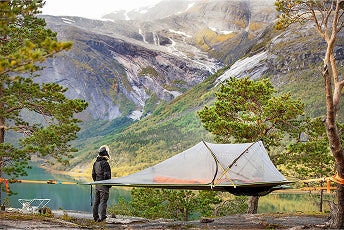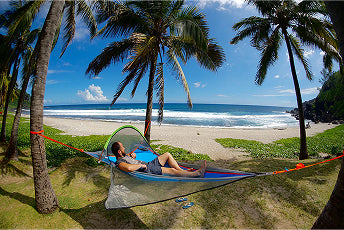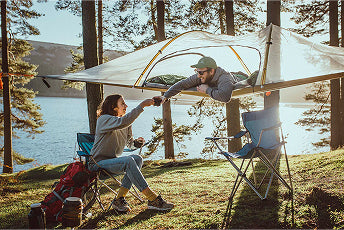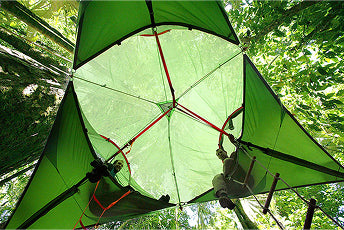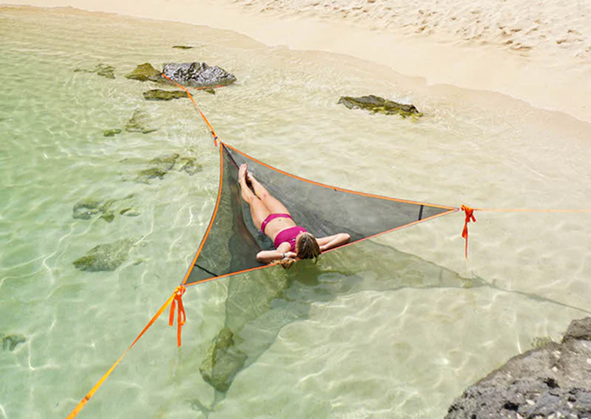The trouble with first-aid kits for camping is they usually come in two varieties. You can get a $20 version in a flimsy plastic case, a bunch of plasters, and lousy plastic tweezers, but it's just not up to the job of a real camping trip.
Your other option isn’t much better: blowing a couple hundred on a nifty-looking trauma kit that probably comes from a survival store with a selection of camo options. These kits tend to be complete, and appropriate for extreme wilderness expeditions, but they’re expensive and usually include emergency equipment you don’t know how to use and never will (unless you're heading off into the African Savannah for the next 6 months).
After interviewing several EMTs, medics, and wilderness experts, our guest bloggers have gathered a list of supplies that can handle most medical emergencies you might encounter on a camping trip. Gather these together for less than $100, pack them with your other camping gear, and enjoy your next adventure.
Camping First-Aid Kit Loadout
Plasters
Or “Band-Aids” if you’re from the other side of the Atlantic. You’re familiar with their use. Your kit should have an assortment, including five types:
- 10 1” x 3” Band-Aids (standard size)
- 10 ¾” x 2½” Band-Aids for slightly smaller hands
- 10 spot Band-Aids for use on stings and minor cuts
- 5 knuckle Band-Aids because they stay on fingers
- 2 knee/elbow Band-Aids
Specialty Bandages
These are for more serious or less common injuries. Remember, part of a camping first-aid kit’s role is to begin treating a hospital-level injury when help is an hour or more away. If you’re not sure how to use the items on this list, take the time to learn. They’re relatively simple and can save a life.
- 5 butterfly Band-Aids for smaller, deep cuts
- 1 strip-closure Band-Aid for large slashes that will need stitches
- 2 eye Band-Aids. Put one over each eye to minimize eye movement on your way to the hospital
- 10 2” x 2” sterile gauze pads to use for large, shallow scrapes
- 1 Israeli compression bandage for severe injuries with arterial bleeding
- 1 sheet of moleskin to prevent and protect blisters (vital for hikers)
- 1 chest seal, which is a device to help stabilize a torso injury
Sting and Allergy Relief
You can easily get stung by bees, bitten by spiders, or accidentally run through a patch of poison oak while camping. These items offer relief from the pain, but they also reduce your body’s reaction and help lower swelling.
- 5 sting relief patches to wipe directly on the sting
- 1 tube of antihistamine cream to rub on to rashes and outbreaks
If any member of your family or regular camping buddies has a bee sting allergy or severe allergy to everyday food, include an EpiPen.
Cleaning Tools
A well-cleaned wound is a wound that won’t get infected. Unfortunately, camping means you often lack access to running water and a bar of soap. These items will help you do the job.
- 30 antiseptic wipes, individually packaged
- 1 tube of antibiotic ointment to dab onto the bandage
- 20 cotton swabs for deftly cleaning smaller cuts
- 5 cotton balls for cleaning and drying larger areas
- 1 small eyewash bottle to rinse dirt out of eyes or clean a deeper wound
Tape and Wraps
The first job for tape and wraps is to hold things in place. For instance, tape can hold gauze in place or immobilize a sprained joint or broken limb. These tools come in handy for dozens of other emergency uses.
- 2 rolls of 2” gauze wrap to securely hold bandages in place
- 1 triangle bandage for immobilizing a damaged arm or shoulder
- 1 roll of cloth medical tape for more uses than we can list here
- 1 roll of 3” Koban wrap, which is self-sticking tape
Medicine
You don’t want to camp with your full home medicine cabinet, but a few doses of essential over-the-counter medications can make a short-term difference. Sometimes it’s just comfort. Other times, it can let somebody get to the hospital in time to save their life.
- 2 individual-dose packs of Advil for injury pain relief
- 2 individual-dose packs of Paracetamol for fever and illness pain relief
- 2 individual-dose packs of Benadryl for allergies and stings
- 2 individual-dose packs of baby aspirin for someone having a heart attack
Equipment
Your kit will also need a few pieces of durable equipment. Don’t buy these at the pound store. Get the higher-quality versions that will work well and won’t break when you need them.
- 5 safety pins in assorted sizes
- 1 tweezer or splinter remover for removing splinters
- 1 small pair of scissors for cutting medical tape, moleskin, and gauze
- 2 disposable heat packs for pain relief and treating hypothermia
- 2 disposable ice packs for pain relief and treating heat exhaustion
- 5 pairs of nitrile medical gloves
- 1 permanent marker to write essential time stamps and symptoms on a patient’s skin
Survival Gear
You should carry a separate survival kit anytime you go camping and are more than 10 minutes from your car. Each of these items can help in medical emergencies and other survival situations, like getting lost or caught in a storm.
- 1 mylar emergency blanket to keep warm
- 2 glowsticks to provide safe, no-hands lighting that lasts a long time
- 1 flashlight for directed light and signaling for help
- 1 Swiss Army knife or multitool
Storage and Maintenance
You can spend a surprising amount on the container for this kit, but look around and you can find something cheap enough that is small, water-resistant, and has lots of little pouches, subsections, and other areas to keep things organized. Also, you should go through your kit once a year, remove and replace expired medications, and refill items.
Final Thought
Although this list is fairly comprehensive, you should customize and add to it as you see fit. Prescription medications for everybody you camp with is a standard start, but also consider comfort items. Small children might appreciate a stuffed animal or special blanket during an emergency, for example, while an adult might want a crossword puzzle or headphones while waiting for EMS to arrive.
The important part is to have a plan and modify it for your needs.
Blog by Aaron Woods - a teacher in Kentucky, who spends his summers off taking his family of five camping.

